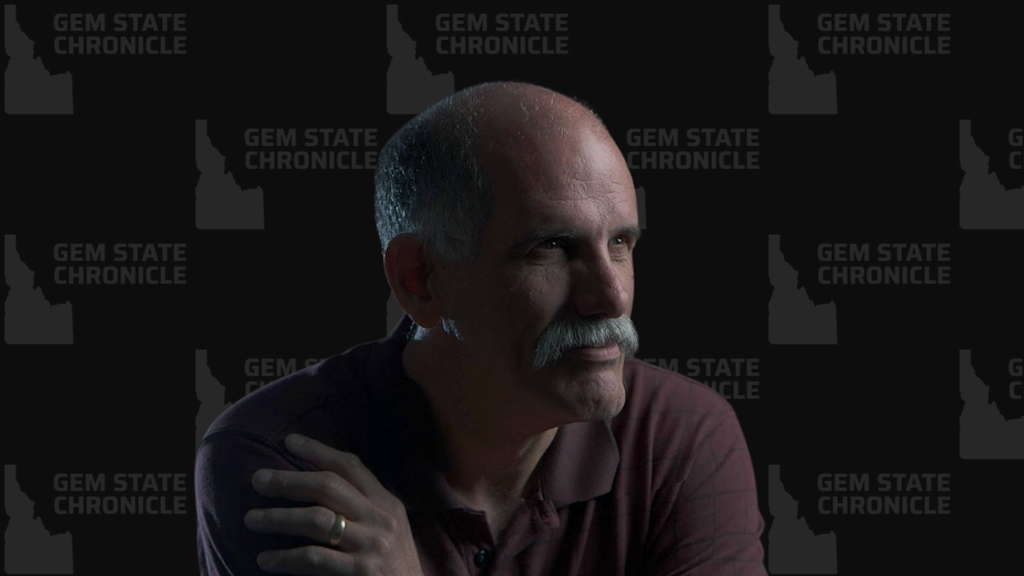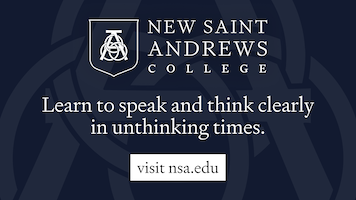By Art Macomber
Prop 1 Fails Review – Part 1
After much arm-waving and bumper sticker arguments, I decided to review the actual text of Proposition 1. To my knowledge, no attorney has offered an analysis for the voter. Based on my reading, it should fail for vagueness, complexity, unfairness, and its need for new executive rules. This is Part 1 of 5 where I analyze each new section in the order presented in Proposition 1.
Initially, there are no fewer than 21 typographical errors, some of which are substantive and may require a lawsuit to resolve. Even for the non-substantive errors, one has to question what kind of thinking would result in such sloppy writing. For example, proposed amended section 34-715 has duplicate numbering of its subsections. On these points alone, I would vote NO on Proposition 1 until it was properly written.
Underscoring the sloppy writing is the fact that it repeals Idaho Code section 34-903B, which today prohibits ranked choice voting in Idaho. This is no Progressive Era or New Deal statute, but was passed by the Legislature in 2023. I heard no hue and cry, saw no demonstrations, or read any newspaper editorials or online complaints about that 2023 law, but suddenly the people need to bypass the Legislature to repeal it? The repeal of existing law is by referendum, not by initiative, and those methods of changing the law appear to require separate petitions and separate processes, see Idaho Code section 34-1801A. It is likely unlawful to combine a referendum and an initiative, because the arguments and effects about a new law will be distinct from arguments and effects of repealing of an existing law. To avoid voter confusion, Idaho has a single subject rule for legislation. I suspect this initiative cannot be a referendum too, which is another reason for voting NO on Proposition 1.
Proposition 1 has been offered as an open primaries initiative. My review indicates it creates two primaries and two general elections that use different methods. One primary is for precinct committeemen at the county level, compare sections 34-702A, 34-703, and 34-704, and another primary is for all other offices, except judges. If not true, why have both a “primary and top four primary?” Then, Proposition 1 creates two general elections, because if only two candidates advance from a top four primary, then “instant runoff voting” [so-called Ranked Choice Voting] for the general election does not apply. There have to be three candidates to use instant runoff voting, see new section 34-1218(2). The election systems under Proposition 1 are too complex, and will trigger heavy lawsuit costs, but only for those individual candidates who can afford suits in Idaho or federal courts of law. As one who has argued Idaho election law in the courts, Proposition 1 invites costly lawsuits.
Rather than argue on substantive policy issues, those who cannot enunciate their own party platform sufficient to muster a challenge to Republicans in Idaho give us Proposition 1, the so-called “open primaries initiative.” I cannot understand why the freedom of association of Republicans must be discarded in favor of the dilution of political parties. The proposed new Idaho Code section 34-118 states the “top four primary elections do not determine any party’s nominee and candidates who advance from a top four primary election to a general election are not considered nominees of any political party.” Therefore, why have party affiliations at all?
When “instant runoff voting” is defined in the new Idaho Code section 34-119, it is said to be “the method of casting and tabulating votes described in section 34-1218,” which is also a new section. The misleading part in section 34-119 is the sentence that states, “voters may rank candidates by order of preference, each ballot counts as a single vote for its highest-ranked active candidate,” but the candidate receiving the fewest votes is eliminated, and votes for that candidate are assigned upward “to each ballot’s next-highest ranked active candidate.” In short, any vote made after the first choice will be reassigned by the process of tabulation to the next least-favored candidate. Why would Idaho purposefully assign votes to the least favored candidate?
Prop 1 Fails Basic Review – Part 2
This is Part 2 in the five part analysis of Proposition 1. An 18-page Proposition 1 is not enough, because the Secretary of State must create new rules to add to the 722 sets of administrative rules now existing in Idaho. New executive branch rules are needed for post-election audits, certain statements of votes cast for candidates, and administrative rules for elections conducted by instant runoff voting, including new “rules for canvassing, for tabulation, and for releasing unofficial preliminary round-by-round results as soon as feasible after the polls close,” see new Idaho Code section 34-1218. Figuring out a candidate and their policy positions is difficult, but now the voting process will be indecipherable to the average voter. How would Proposition 1 make our political lives easier?
The new subsection (3) of 34-411A makes it clear that two primaries are created, because “For a top four primary election, an elector does not need to be affiliated with a political party in order to vote.” Compare this to 34-704, where precinct committeemen must be affiliated with a political party. The two primaries will be combined into one election, which equals more confusion.
Proposed amended section 34-501(1)(b) tilts the law toward mere “affiliation” with a political party by allowing creation of a party where “at least three percent of the aggregate of votes cast for all candidates indicating their affiliation with that party pursuant to section 34-704A, Idaho Code, in any round of tabulation in a general election for governor.” The single sentence of 34-501(1)(b) needs work to be coherent.
The amended Idaho Code section 34-702A(3) allows vote-stealing. In general elections conducted by instant runoff voting, a write-in candidate who has not submitted a declaration of intent is not considered an active candidate, but the vote for that candidate will still count the same as an eliminated candidate when tabulation occurs, see proposed Idaho Code section 34-1218(3)(b) and (c). You could write-in Ms. Smith, but your vote could be assigned to another candidate you never chose! Such vote stealing should not be legalized.
Proposed new Idaho Code section 704A(1) demonstrates the writer’s deficits when stating, “Any person who desires to offer themself as a candidate,” instead of the simpler “Any person who desires to be a candidate.” Why use clunky and arcane language when a direct statement is better? Proposition 1 is not edited properly, and to make it a law in November would award poor drafting to Idaho’s detriment.
If you are an Independent in Idaho, amendments to Idaho Code section 34-708 strikeout the section and replace it with a single sentence: “No person may offer himself as an independent candidate at the primary election.” The destruction of party nominations is one target of Proposition 1. Today, candidates can represent themselves as being part of a party with discernible principles and articulated policy positions. Bumper-sticker candidates with no ties to a party do not make better governance. An Independent Party should be allowed to offer candidates in an Idaho Independent primary.
Proposition 1 amendments to Idaho Code section 34-715 have made it indecipherable. The numbering is incorrect, so that subsections (1), (2), and (3) are duplicated but with different language. According to the second subsection (2), we are offered “Jack-in-the-Box” revivals. If vacancies in races occur after the new “top four primary” but at least ten days before the general election, such vacancies are filled “by advancing the candidate, if any, who received the most votes in the top four primary but did not qualify to advance to the general election pursuant to [Idaho Code] section 703(2)(c).” After reading the several provisions, it is unclear how a candidate could not fail to advance to the general election based on the proposed amended Idaho Code section 34-703(2)(c). If I cannot understand these provisions, then I guarantee the average voter will be lost too. Idaho does not need such complex elections.
In the second subsection (3) of the proposed Idaho Code section 34-715, a tie “shall be broken in a manner similar to” the provisions found in the amended Idaho Code section 34-1216. That section calls for tied results to be resolved by a coin toss, or by the constitutional provision if the tie involves an executive branch office. What is “in a manner similar to?” The provision is vague for not defaulting to the coin toss or the constitution. Idahoans do not need any backroom or machine decisions about what may be similar to a coin toss or our constitution.
Prop 1 Fails Basic Review – Part 3
This is Part 3 in the five part analysis of Proposition 1. After reading the proposed amended Idaho Code section 34-904, and the proposed amended Idaho Code 34-904A, it is difficult to see whether Idaho has two primaries or one. It appears that there will be two ballots, one for precinct committeemen of parties, and a second where all the other candidates will be mixed in together. To further dilute political party policy and principle cohesiveness and thus articulable challenges, a political party may currently allow electors designated as unaffiliated, and electors actually registered to a different political party to vote in that party’s primary election, see proposed amended Idaho Code section 34-904A(2). Why a party would ever do this after Proposition 1 is unknown. On the other ballot, “Every qualified elector shall be allowed to vote in the top four primary election, regardless of party affiliation.” This is the so-called open primary.
An open primary means that political party activities will not focus on candidates challenging each other over policy or principles. It means that Idaho will cement into law a uni-party voting system, where policy and principles are irrelevant. A fight over policy and principles will waste time, because interlopers with other policies and principles will intervene to create a mish-mash. If the candidate with the fewest votes is cast aside, and those votes are transferred to the next highest candidate, then the weakest candidates on policy and principles will be preferred. Candidates who have little knowledge of policy, and those who lack principles should not gain an advantage. This law would harm Idaho, and Proposition 1 should fail, so policies and principles are not destroyed in favor of pablum.
The ballot disclaimers in proposed Idaho Code section 34-904(4) and 34-906(3) and (5) confirm that a candidate’s chosen affiliation “does not imply that the candidate is nominated or endorsed by the political party or political group or that the political party or political group approves of or associates with that candidate, but only that the candidate is registered as affiliated with the party or group.” In short, you can still register for any party, which is traditionally a public representation about your policy positions and principles. But, the fine print indicates being associated with a political party means nothing. If a party does not nominate a candidate, or endorse a candidate, or approve of a candidate, or associate with a candidate, then a cogent voter should recognize that the candidate does not represent that party’s policy positions and principles. Proposition 1 encourages wolves in sheep’s clothing.
The disclaimer regarding federal presidential and vice-presidential candidates found in subsection (5) of section 34-906 is hash, because some candidates for those two offices are official nominees of their political party. Proposition 1 is poorly drafted law, and that subsection (5) should give a clearer disclaimer.
Proposed amendments to Idaho Code section 34-1201 are confusing. In subsection 1, the judges count the ballots, but in amended section 34-1203(1) “the election personnel” tally the votes cast. Which is it? We know who the judges are and they can be held personally accountable, but election personnel? Who are these people? The judges should also tally the votes cast.
In the new subsection (5) to Idaho Code section 34-1201, elections shall be canvassed. The problem is that canvassing is traditionally a confirmation process by a board of county commissioners or other entity and not a tabulation process by election office personnel – or by a voting machine. A canvass confirms the tabulation, see 34-1207, “After the canvass of the votes for each office, the board shall cause the county clerk to complete a canvass report, which shall then be signed by each member of the board,” or 34-1711(1): “The board of county commissioners shall act as the board of canvassers.” The definition of the word “canvass” is being changed from confirmation of the vote counts by a Board of County Commissioners to a tabulation function done by unaccountable people or machines. No argument is made as to why this needs to happen, or how this change benefits Idaho.
Prop 1 Fails Basic Review – Part 4
This is Part 4 in the five part analysis of Proposition 1. Proposed amended Idaho Code section 34-1203A(1)(b)(iii) and (iv) are vague where they currently use the phrase “narrowest percentage margin.” A specific percentage should be used, such as 5% or 3%. Whether people or machines are used, specific percentages would give a specific point that determines whether post-election audits may be performed. Current law is vague and needs correction, but Proposition 1 does not do it. Also, at proposed amended Idaho Code section 34-1203A(1)(b)(v), why can only one legislative office election within a county be selected for post-election audit? If an election is that close, then why can’t post-election audits be held for more than one office? These questions about current law remain unaddressed by Proposition 1. The chance to clarify the law is bypassed in favor of more confusion and complexity.
Proposed amended Idaho Code section 34-1203A(1)(c)(i) calls for precincts to be selected for audit “by lot.” We are not given a definition, but the new subsection (5) assures us that “Postelection audits for elections using instant runoff voting shall be conducted using procedures” created by the Secretary of State in executive branch rules. The final process will be created by policy wonks in Boise, but invisible to normal voters who have little time for arguing over new rules. Thus, Proposition 1 does not clarify the law for citizen voters, but leaves it to the so-called experts in Boise.
The proposed amended subsection (2) for Idaho Code section 34-1206 assures more centralized control from Boise. Today, counties and their clerks are responsible for statements of the total numbers of votes cast in elections, but with instant runoff voting rules for these statements moves to Boise. I am unaware of a good reason why local control must be discarded for central control in Boise.
Proposed amended Idaho Code section 34-1208 is too duplicative of the proposed amended 34-703, where section 34-1208 proposes to add the words “a sufficient” in the first sentence regarding the number of votes to advance to the general election. Current law in that first sentence reads, “Immediately after the primary election canvass the county clerk shall issue certificates of nomination to the political party candidates of each party who receive the highest number of votes for their particular county office, and the candidates so certified shall have their names placed on the general election ballot.” Proposition 1 adds the words “top four” before the word “primary,” but the sloppy Proposition 1 drafter did not underline that change. Then, Proposition 1 deletes the words “the highest” and inserts the words “a sufficient” in their place. If properly drafted, the sentence would read, “Immediately after the top four primary election canvass the county clerk shall issue certificates of nomination to the candidates who advance to the general election pursuant to 34-703(2), Idaho Code.” Subsection (1) of 34-1214 makes this same error. The drafting of Proposition 1 was sloppy, and voters should not approve it.
Proposed amended Idaho Code section 34-1209 centralizes issuance of most certificates of election in Boise, instead of having local control remain in the counties. Subsection (1) of 34-1209 only applies to precinct committeemen, because general election instant runoff voting covers most other candidates, including “Congress, state elective office, County elective office or state legislature involving three or more candidates,” see new section 34-1218(2). Proposition 1 is unclear whether a county or the Secretary of State will issue a certificate of election for a county office if only two candidates are in the election.
Proposed amended section 34-1214 turns a primary into a general election under certain conditions. Subsection (2) states, “If it appears from the [top four primary] canvass that a particular candidate has received a majority of the total vote cast for the particular office, he shall be issued a certificate of election instead of a certificate of nomination and no candidates shall run for the particular office in the general election.” This provision short-circuits political discussion or challenges between parties or candidates over policy or principles. If one can bamboozle the electorate in the primary, that candidate will get the job. This is not the democratic election of representatives, because unchallenged views should not rule the day.
Prop 1 Fails Basic Review – Part 5
This is Part 5 in the five part analysis of Proposition 1. Proposed amended Idaho Code section 34-1215 confirms that in a general election for an office with only two candidates will not be conducted by instant runoff voting. Only in general elections where an office has three or more candidates does instant runoff voting occur, see new section 34-1218(2). However, the lack of clarity in 34-1215 was avoidable if sentences one and two were combined and shortened. Proposition 1 is poorly written, and it should not become law in Idaho.
Proposition 1 dilutes political activity away from substantive discussion of policy and principle such that tie votes are resolved by a coin toss, or the constitution if the election was for an executive branch office, see proposed amended section 34-1216. If candidates were articulate enough to make their substantive case, then tie votes should never happen, because the best argument would win. In cases of tie votes for a State office, the constitutional provision should be the only tie breaker. Section 2 of Article IV of the Idaho constitution is always preferable to a coin toss, because it keeps the political discussion alive in the State legislature. The provision states that “if two or more [candidates] shall have an equal and the highest number of votes for any one of said offices, the two houses of the legislature at its next regular session, shall forthwith, by joint ballot, elect one of such persons for said office.” A legislative check on voter tie outcomes would serve Idahoans better than a coin toss. This resolution could happen at the county level too.
A new section brings the so-called Ranked Choice Voting, called in Proposition 1 “instant runoff voting.” Proposed new section 34-1218 gives the procedures. In subsection (1)(a) it defines “Active Candidate,” but does not reconcile that definition with the Jack-In-The-Box revival found in section 34-715(2). It is difficult to tell when a candidate has been eliminated due to this revival feature.
The proposed new section 34-1218 is nefarious. It mandates that as rounds of tabulation are done, candidates receiving the fewest votes are eliminated, and then those votes are given to the “next highest-ranked active candidate,” see subsections (3)(b) and (3)(c). The system mandates middle-of-the-road candidates have a better chance than the highest vote getter, who must defend his pile of votes against the combined votes of all other candidates in a given round. This is done by machine tabulation, and thus political discussion between candidates to elect the superior candidate is avoided. Why the jihad against political competition?
Worse, Idaho Code section 34-1218 at subsection (5)(a) requires a lottery to be held “if two or more candidates are tied with the fewest votes and tabulation cannot continue until the candidate with the fewest votes is defeated.” Let’s be clear, no one is defeated, but eliminated, because there is no contest when decisions are made “by lot.” In that same subsection (5) at (b) tie votes in a final round of tabulation will be broken “as provided by law” or by the Idaho constitution. So, we have coin tosses, lotteries, “as provided by law” (so we need more new law), the Idaho constitution, and the Secretary of State can make new rules to resolve our political disagreements. It sounds like the expectation of Proposition 1 is that voters are too stupid to not have tied elections, because it was all bumper sticker politics in the primaries and the general elections. By this new system, the ultimate decider of who should occupy an office in the case of a tie could be the Secretary of State using whatever rules he creates, see new section 34-1218(7).
I conclude Proposition 1 is poorly drafted, undermines political parties and thus political discussions on policy and principles, and is inferior to the comparatively simple voting methods Idaho uses today. I recommend a vote against Proposition 1.
Mr. Macomber ran for State Attorney General in 2022 after 16 years practicing law in Idaho. Comments can be sent to [email protected]













